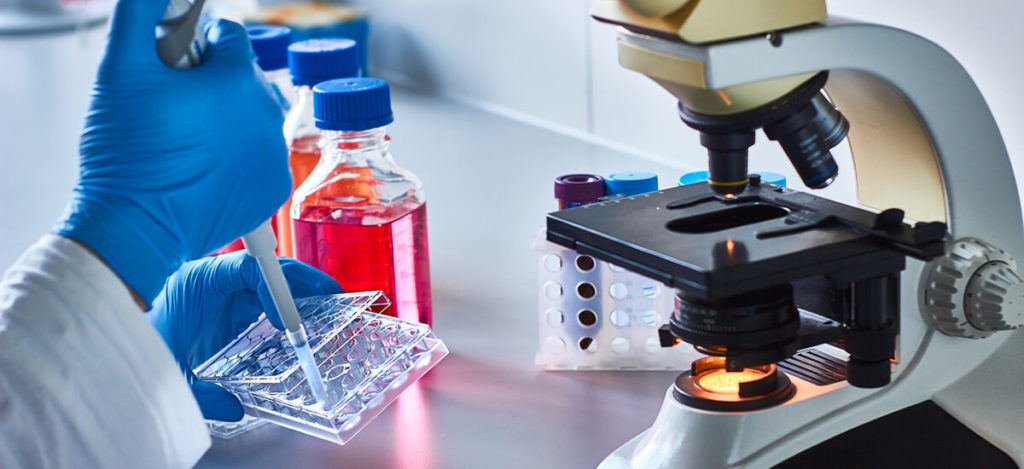RATIONALE: Chemoprevention therapy uses certain drugs to try to prevent the development or recurrence of cancer. Celecoxib may be effective in preventing breast cancer in at-risk women.
Official Title
Phase II Chemoprevention Study of Celecoxib in Premenopausal Women at High Risk For Estrogen Receptor-Negative Breast Cancer
Conditions
-Breast Cancer
Study Type
Interventional
Study Design
Prevention
Further Details
PURPOSE: Phase II trial to study the effectiveness of celecoxib in preventing breast cancer in premenopausal women who are at risk of developing cancer. OBJECTIVES: * Determine the change in proliferation in benign breast epithelial cells as measured by Ki-67/MIB-1 in premenopausal women at high risk for estrogen receptor-negative breast cancer treated with celecoxib. * Determine the feasibility of this regimen by dropout rate of these patients during 12 months of treatment and compliance. * Determine the proportion of these women likely to express cyclooxygenase-2 protein (COX-2) in at least 10% of benign ductal epithelial cells. * Compare the success rate of obtaining adequate ductal epithelial cells by random periareolar fine needle aspiration (FNA) and ductal lavage in these patients before vs after 12 months of a prevention intervention. * Assess pain associated with FNA and ductal lavage in these women. * Correlate, if possible, serum proteomics pattern with cytologic assessment and mammographic density at baseline and at 12 months in these patients.OUTLINE: This is an open-label, multicenter study.Patients receive oral celecoxib twice daily. Treatment continues for 12 months in the absence of clinical evidence of cancer confirmed by biopsy or unacceptable toxicity.Patients are assessed at baseline and at 12 months for mammographic breast density, serum hormone levels, and serum IGF-1/IGFBP-3. Patients undergo ductal lavage or fine needle aspiration for assessment of supernatant proteomics and breast biomarkers.Patients are followed at 2 weeks and then annually for 5 years.PROJECTED ACCRUAL: A total of 110 patients will be accrued for this study within 10-14 months.
Study Start
Eligibility & Criteria
Ages Eligible for Study: 18 Years – 55 Years, Genders Eligible for Study: BothAccepts Healthy VolunteersCriteriaDISEASE CHARACTERISTICS: * Increased risk for breast cancer on the basis of at least 1 of the following criteria: * Five-year Gail risk at least 1.7% or a calculated risk at least 5 times the average for age group * 20-29 years old – calculated 5-year Gail risk is at least 0.1% * 30-39 years old – calculated 5-year Gail risk is at least 1.0% * 40 and over – calculated 5-year Gail risk is at least 1.7% * Known BRCA1/BRCA2 mutation carrier * Family history consistent with hereditary breast cancer, as defined by any of the following circumstances: * At least 4 relatives with breast cancer at any age * At least 2 first-degree relatives diagnosed with breast cancer at age 50 or younger * Breast and ovarian cancer diagnosed in the same relative * At least 2 occurrences of breast cancer and 1 occurrence of ovarian cancer at any age in the same family * Prior biopsy exhibiting atypical hyperplasia, lobular cancer in situ, ductal carcinoma in situ (DCIS)*, or invasive cancer** NOTE: *If DCIS or T1a or T1b disease was found, at least 2 months must have elapsed since prior surgery and/or radiotherapy to the involved breastNOTE: **Prior invasive cancer (T1c, T2, or T3) must have been diagnosed at least 2 years before study and be estrogen receptor-negative, node negative * Must have had a random periareolar fine needle aspiration successfully performed within the past 3 months, with at least 1,000 cells on cytology slide and 3 additional slides for biomarker analysis (1 with at least 500 cells for Ki-67 and 2 with at least 100 ductal cells for estrogen receptors and COX-2) * Hormone receptor status: * Estrogen receptor negativePATIENT CHARACTERISTICS: Age * 18 to 55Sex * FemaleMenopausal status * Premenopausal, defined as menstrual periods estimated to occur every 21 to 35 days over the past 6 monthsPerformance status * Not specifiedLife expectancy * At least 5 yearsHematopoietic * Absolute granulocyte count at least 1,000/mm^3 * Platelet count at least 100,000/mm^3 * Hemoglobin at least 10 g/dL * No bleeding diathesis within the past yearHepatic * Bilirubin no greater than 2.0 mg/dL * Albumin at least 3.0 g/dL * AST and ALT no greater than 2 times upper limit of normal (ULN) * Alkaline phosphatase no greater than 2 times ULN * No severe liver disease requiring treatmentRenal * Creatinine no greater than 1.5 mg/dLOther * Not pregnant or nursing * Negative pregnancy test * Fertile patients must use effective contraception * No prior allergy to sulfa, COX-2 inhibitors, or nonsteroidal anti-inflammatory drugs (NSAIDs) * No history of an ulcer requiring treatment * No history of ulcerative colitis * No inflammatory bowel disease * No prior metastatic malignancy of any kind * No complications of alcoholism requiring hospitalization * No concurrent asthma being treatedPRIOR CONCURRENT THERAPY: Biologic therapy * Not specifiedChemotherapy * At least 6 months since prior chemotherapyEndocrine therapy * At least 6 months since prior antihormone therapy (e.g., selective estrogen-receptor modulators or aromatase inhibitors) * Anticipated use of oral or IV corticosteroids must be less than 2 weeks per year * No change (stop or start) in hormonal therapy within the past 6 months (e.g., estrogen, progesterone, oral contraceptives, or fertility agents)Radiotherapy * See Disease Characteristics * No prior radiotherapy to the contralateral breast involved in the study treatmentSurgery * See Disease CharacteristicsOther * At least 3 weeks since prior aspirin, rofecoxib, celecoxib, other COX-2 inhibitors, or NSAIDs * No concurrent anticoagulants * No other concurrent NSAIDs * No chronic angiotensin-converting enzyme inhibitors * No chronic furosemide* * No chronic fluconazole* * No chronic lithium NOTE: *Occasional concurrent use allowed
Total Enrolment
Contact Details
[1] Carol J. Fabian, MD, Study Chair, University of Kansas
All content and media on the HealthEngine Blog is created and published online for informational purposes only. It is not intended to be a substitute for professional medical advice and should not be relied on as health or personal advice. Always seek the guidance of your doctor or other qualified health professional with any questions you may have regarding your health or a medical condition. Never disregard the advice of a medical professional, or delay in seeking it because of something you have read on this Website. If you think you may have a medical emergency, call your doctor, go to the nearest hospital emergency department, or call the emergency services immediately.







